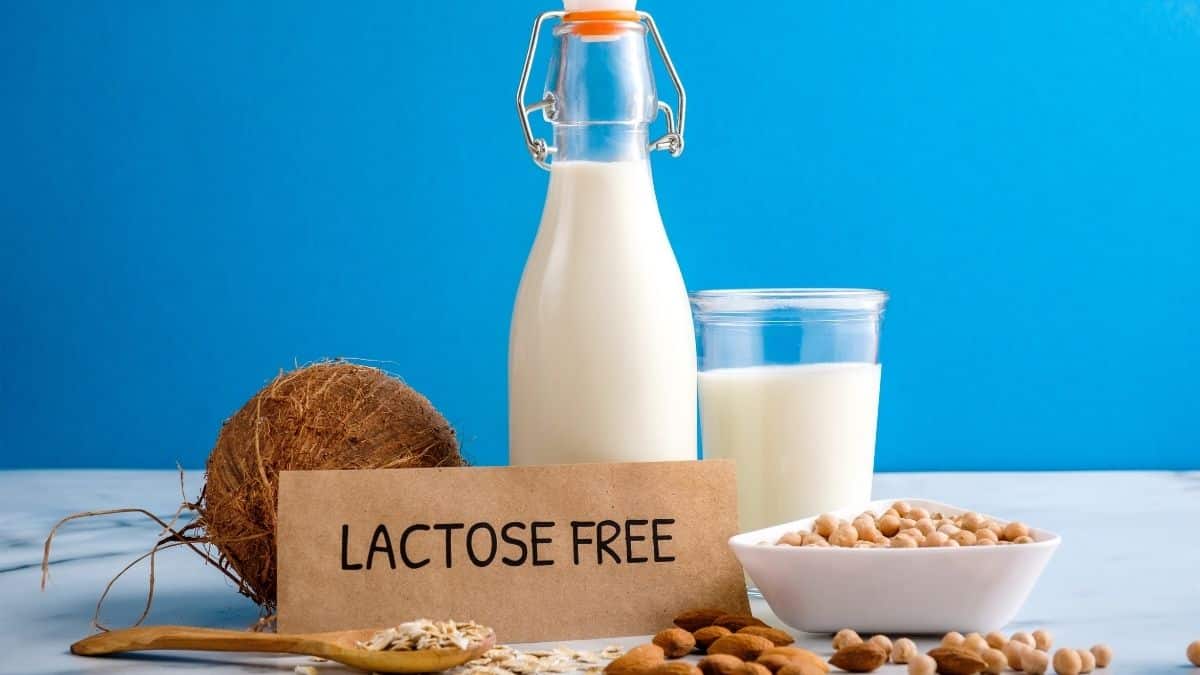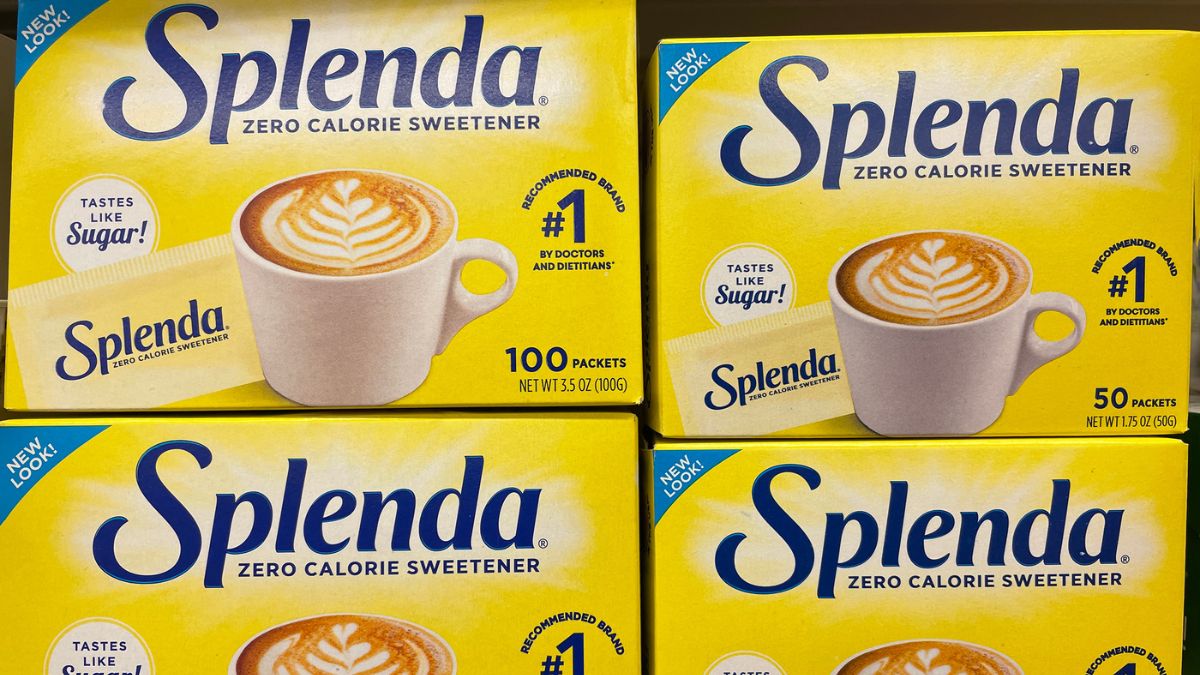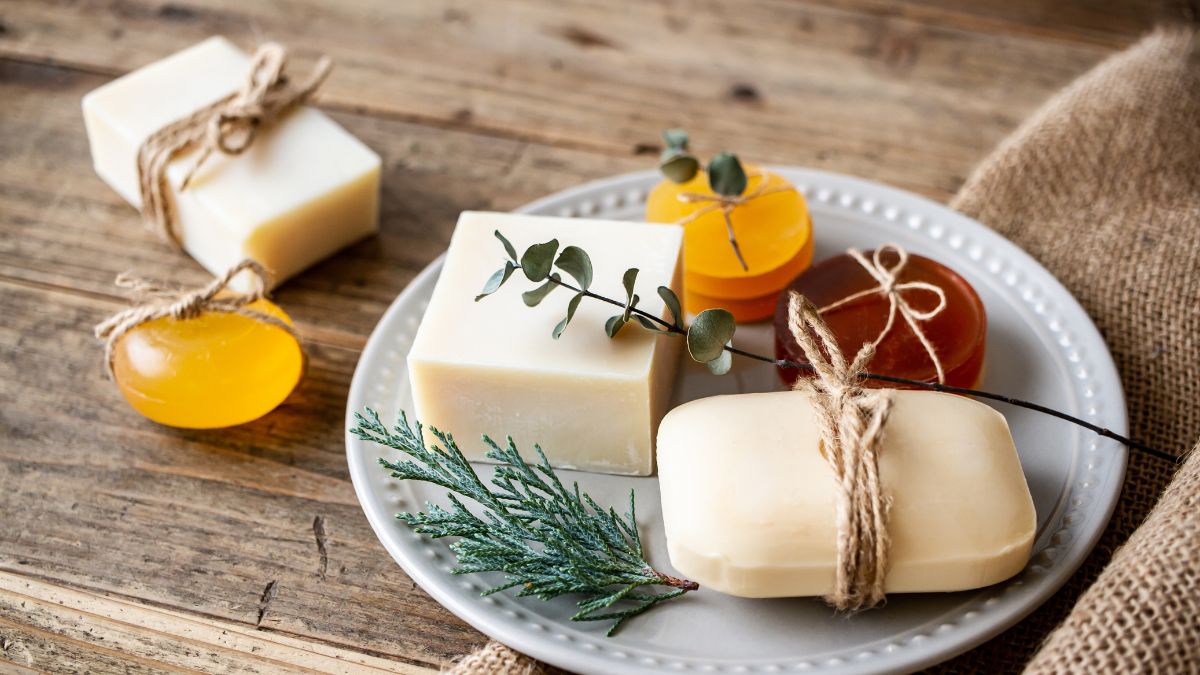Answer: No. Lactose-free milk isn’t vegan. As opposed to dairy-free milk, lactose-free milk still has milk in it. Therefore, it does not meet the definition of a vegan food item.

Is Lactose-Free Milk Vegan?
Vegans follow a specific diet that is free from animal products. So when you see a milk label that reads “lactose-free,” you might wonder if it’s for you. While lactose-free milk is excellent for people with lactose intolerance, it’s not vegan-friendly. It is just regular milk minus lactose.
So what’s the scope of lactose-free milk for vegans? Is there anything you can do with the lactose-free milk if you’re religiously following a vegan diet? Find the answer for yourself in this article.
What Is Lactose-Free Milk?
Lactose-free milk that is commercially available is a type of milk where the milk’s lactose content is removed. For the uninformed, lactose is a naturally-occurring sugar found in milk. It is a disaccharide. This means there are two sugar units, namely glucose, and galactose.
The body breaks down lactose into glucose and galactose sugar (galactose is eventually converted to glucose). Some people find it difficult to break down and consume. But it’s the people with lactose intolerance who find this milk type helpful.
In a 250ml cup of regular milk, you’ll find about 12 grams of lactose. When the milk is lactose-free, there is no lactose present in the fluid.
Companies that prepare lactose-free milk remove the lactose content, and that’s how you get this milk variant.
They remove the lactose content by adding the lactase enzyme. This enzyme helps in breaking down the lactose disaccharide into glucose and galactose monosaccharide.
Lactose-Free Milk vs Regular Milk
Lactose-free milk looks just like regular milk. There is no difference in terms of texture, color, or nutrient profile. So you’ll find both types of milk the same. The only difference you’ll notice is in taste. In general, lactose-free milk is sweeter than regular milk because of the presence of lactase.
If you’re buying this milk variant, you should refer to the product label. The naked eye won’t help you differentiate lactose milk from other types of milk.
What’s Lactose Intolerance?
Many people with lactose intolerance opt for lactose-free milk as an alternative. But what exactly is lactose intolerance? It’s a condition affecting an estimated 30 to 50 million Americans, where the body struggles to digest lactose, the sugar found in milk. This happens because the digestive system cannot break down lactose into glucose effectively. For those wondering, can vegans drink lactose-free milk? While lactose-free milk is dairy-based and suitable for lactose-intolerant individuals, strict vegans typically avoid it since it comes from animals. As we move into 2025, understanding these distinctions can help you make informed choices about dairy and lactose-free options.
People with lactose intolerance have an inadequate amount of lactase enzyme in their bodies. This enzyme acts as a catalyst to hydrolyze lactose into glucose and galactose, which your body can digest. Without the lactase enzyme, the lactose stays in the stomach and causes digestive disorders. That’s why lactose-intolerant people stay away from dairy products in the first place.
Evolutionary biologists at Cornell University found that people who grew up in places where dairy herds are raised safely and economically have much lactase in their bodies.
The perfect place with such an environment in Europe. Domestication of cattle was common in European countries for ages. Therefore, most of the population in Europe is capable of digesting milk and lactose. That’s not the case among people who came from a region where cattle rearing was restricted. Regions like Africa and Asia where cow diseases were rampant are examples of it.
People from these regions often have an insufficient amount of lactase in their bodies to break down lactose. Thus, they stay intolerant to lactose and avoid milk.
Benefits of Lactose-Free Milk
Milk is one of the most nutrient-dense liquids that humans consume. It is a rich source of calcium, protein, phosphorous, and vitamins. Even though vegans do not drink milk, that doesn’t make it any less nutritious.
If your veganism philosophy does allow you to consume milk, or in this case, lactose-free dairy, then you can expect certain benefits from it.
Lactose-Free Milk Is as Nutritious as Regular Milk
If you’re consuming lactose-free milk, then you can be sure that you’re not compromising on nutrition. The milk is free of lactose; the other components stay the same. People consume milk for better health. As you might already know, our body cannot produce vitamin d naturally. It converts cholesterol to vitamin D when exposed to sunlight.
So if you live in areas with little to no sunlight, you’re at risk of vitamin D deficiency. You have to consume milk to maintain good health.
Milk also supplies essential vitamins like vitamin B12 and vitamin A.
You’re going to find all of these nutrients in lactose-free milk too.
Easier to Digest
Lactose-free milk is easier to digest than regular milk. The reason being your body doesn’t have to work to break down lactose into glucose and galactose.
As you age, your ability to produce lactase decreases. So with no lactase available in your body, you’ll find it difficult to digest milk. If you’re experiencing bloating, abdominal pain, or stomach upset after consuming milk, it’s a sign that your body has decreased the amount of lactase production.
In that case, it’s better to switch to lactose-free milk.
Lactose-Free Milk Is Sweeter
If you’ve got a sweet tooth, you’ll like lactose-free milk more than regular milk. Lactose is tasteless and doesn’t interact with your taste bud as you gulp it down.
But when lactose is converted to glucose and galactose, the glucose molecules interact with your taste buds. Therefore, you’ll find the lactose-free milk tad sweeter than regular milk.
Vegan-Friendly Milk Alternatives
Lactose-free milk is still a dairy product. It is procured from animals, which goes against the principles of veganism. So you must be in search of some vegan-friendly dairy options.
And fortunately, there are a lot of alternatives out there. You can consume these with confidence.
Soy Milk
Soy milk is the preferred milk for vegans. It is popular in many Asian countries where dairy isn’t readily available.
The milk is produced from soybeans that are cultivated in large quantities in the US alone. The US is also the second-largest producer of soybeans.
Soybeans are soaked in water and then ground in a blender mixer. The blended product is then strained to get the liquid. The entire process is simple, and you can prepare soy milk at home as well.
The milk has a strong flavor and texture similar to cow milk. On the nutrition side, it is rich in protein and low in carbs and calories. Soy milk is also prepared from soy protein isolate, which is ideal for people with FODMAP intolerance.
Almond Milk
Almond milk is another popular alternative for vegans. It is made from whole almonds or almond butter.
As compared to regular cow milk, almond milk has fewer calories and fats but has significantly higher protein. Therefore, it’ll suit your lifestyle if you want fewer calories in your diet. Nutritionally, it retains most of the nutrients found in almond, which includes vitamin E, vitamin B, calcium, copper, magnesium, etc.
Almond milk also supplies phytic acid that helps the body absorb iron, zinc, and calcium.
Coconut Milk
With a creamy texture and a sweet taste, coconut milk is another good milk alternative for vegans.
The milk is prepared by mixing water with the white flesh of brown coconuts. The mixture is then filtered to get a smooth liquid.
You’ll receive almost no carbs from coconut, and it’s also low in fat. Therefore, it’d suit a low-fat vegan diet.
Coconut milk also contains something known as MCTs or medium-chain triglycerides. These are saturated fat, which is known to suppress appetite and hunger, thus aiding in weight loss.
Oat Milk
As an alternative to cow milk, you can consume oat milk prepared from oats, gums, and oils. But in its simplest form, it is prepared only from oats and water.
It is mild in flavor and naturally sweet. So you can even use it as an alternative to soy milk or coconut milk. The milk has a high fiber and beta-glucan content, which keeps you full for longer.
You can use oat milk in smoothies and cakes.
Quinoa Milk
Quinoa milk is a relatively newer type of vegan milk that’s made from quinoa. The grain quinoa is hailed as a superfood, and the milk extracted from it is equally useful.
The milk is slightly sweeter than cow milk and has a nutty flavor to it. You’ll most likely be consuming quinoa milk with cereals or porridge.
You can expect almost half the calories than what is delivered by cow milk. The protein, fat, and vitamins are pretty much balanced.
The only issue with quinoa milk is it’s expensive. So you should be prepared to pay for this vegan milk.
To Sum Up
You shouldn’t equate lactose-free milk with dairy-free milk. Lactose-free milk is not vegan, and you should avoid it, especially if your veganism is rather strict.
To fulfill your dairy requirements, you should switch to plant-based milk, some of which are mentioned above.
Many brands are pushing out plant-based milk as an alternative to regular milk. You can purchase them from your local supermarket.




